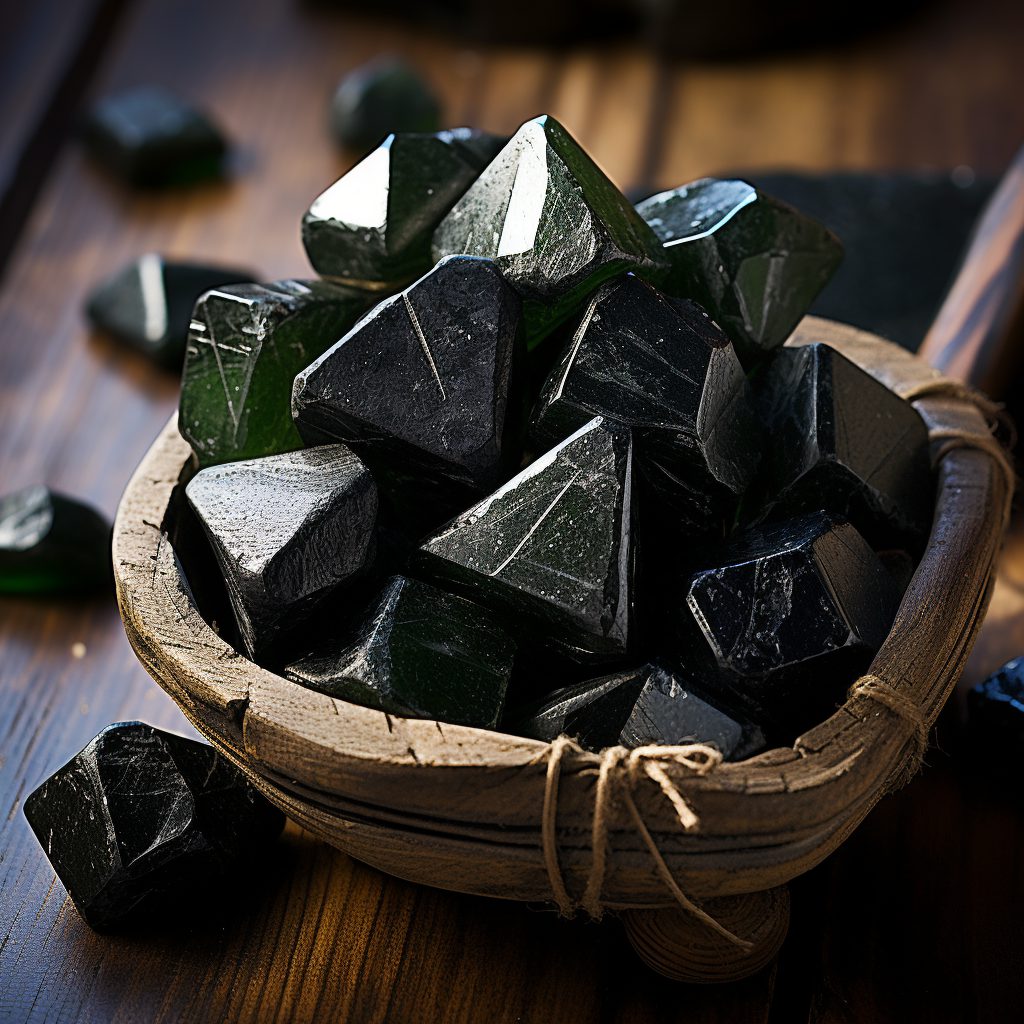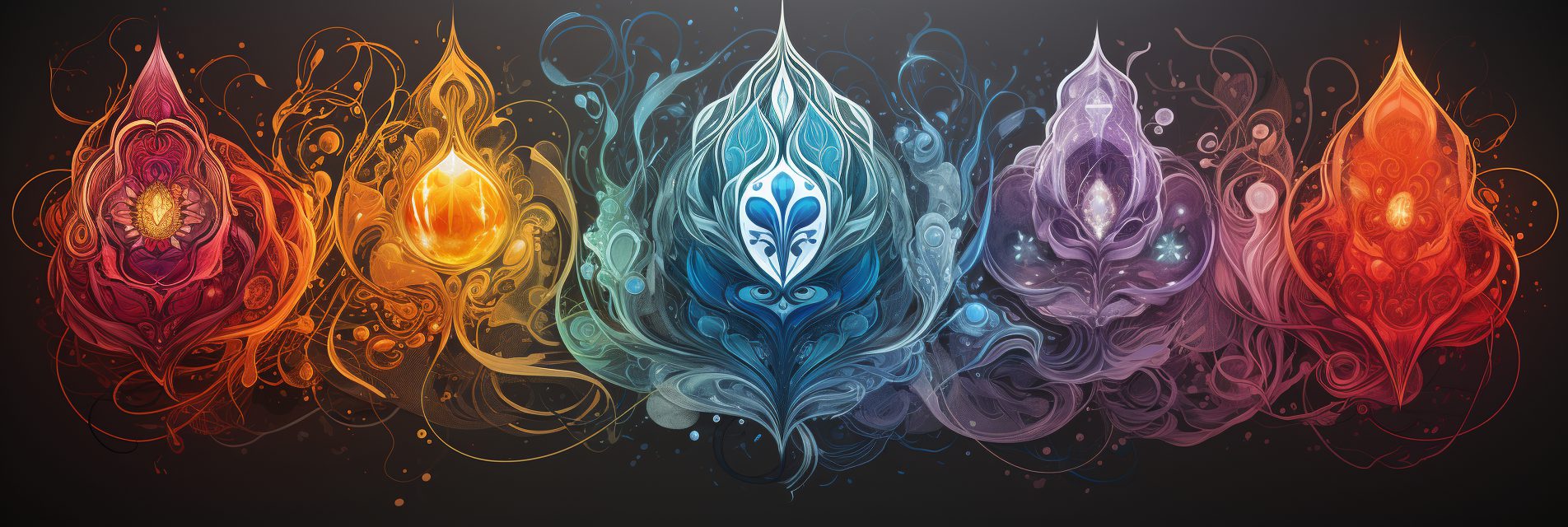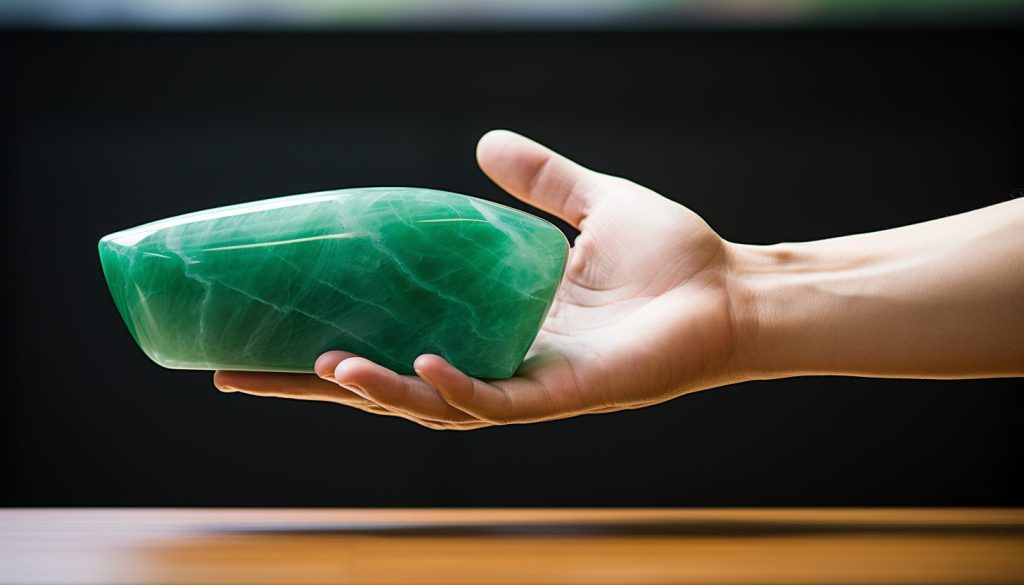The Enigma of Jade: A Brief Introduction
Emerging from the depths of Earth’s crust and revered for its lustrous beauty and deep cultural significance, Jade has enchanted civilizations for thousands of years. This gemstone is aesthetically pleasing and laden with emotional and spiritual significance. Read on to unravel the Jade enigma.
The Intriguing Name Origin
The name “Jade” has its roots in the Spanish term “piedra de ijada,” which translates to “stone of the side.” It was so named because it was initially used to cure ailments related to the kidneys and sides of the body.
Significant Extraction Sites
Jade is predominantly sourced from regions rich in metamorphic rocks. Key locations include Myanmar (formerly Burma), China, Russia, and Guatemala. Each area offers Jade with distinct characteristics and qualities.
Variety of Jade Types
Jade comes in many forms and variations, each with its unique properties and hues. Let’s explore some of the most prominent types.
Nephrite
Nephrite is one of the two primary types of Jade, and it tends to have a greener hue but can also appear in grey or black. Its major sources include China and Russia. A softer composition characterizes Nephrite and often has a greasy or waxy luster. It’s commonly used in both sculptures and jewelry.
Jadeite
Jadeite is the other main type of Jade and is generally considered more valuable. The colors of Jadeite can range from green to lavender and even yellow. Myanmar is the primary source of high-quality Jadeite. This type is harder than Nephrite and has a more crystalline structure. It’s highly sought after for intricate carvings and high-end jewelry.
Omphacite Jade
Omphacite Jade is another predominantly dark green variant. It’s mainly found in Taiwan and is primarily composed of the mineral omphacite. Though less common, Omphacite Jade is valued for its unique composition and deep green hue.
Kosmochlor Jade
Kosmochlor Jade, also known as Cosmochlor, is native to Guatemala. It is similar in composition to Jadeite but contains higher levels of sodium. The dark green coloration and unique chemical makeup make it a fascinating variant of Jade.
Albite Jade
Albite Jade is an extremely rare form of Jadeite that includes albite, giving it a unique blue-green color. Found mainly in Myanmar, this type is cherished by collectors for its exceptional hue and rarity.
Chloromelanite
Chloromelanite is a dark green to blackish variety of Jadeite. It contains more iron than pure Jadeite, contributing to its darker tone. This type is typically sourced from Myanmar and is often used for carved figures and amulets.
Black Jade

Black Jade is generally a type of Nephrite, although Jadeite can sometimes appear black as well. True Black Jade is highly valued and used in various jewelry types, often with a high polish to enhance its sheen.
Lavender Jade
Lavender Jade is a type of Jadeite and is quite popular due to its unique lavender hue. Most Lavender Jade comes from Myanmar. It is a favorite in East Asian jewelry and often fetches high prices due to its rarity and demand.
Unveiling the Historical Echoes of Jade
The Ancient Allure and Uses
The allure of Jade extends far back into ancient times. Chinese civilization revered Jade for its symbolic meanings of virtue, purity, and love. Not only was it crafted into intricate jewelry, but it was also utilized for making ceremonial blades, scrupulously carved statues, and even burial suits for emperors.
In Mesoamerica, Jade was more precious than gold, treasured by the Olmec and Maya civilizations for its spiritual significance. It was commonly shaped into ritualistic masks, figurines, and pendants.
Jade was also esteemed in Maori culture in New Zealand, where it was crafted into weapons and ornaments known as hei-tiki.
Mythological Ties and Folklore Surrounding Jade
Jade has been enveloped in a rich tapestry of myths and folklore. In Chinese mythology, Jade is often associated with the virtues of compassion, wisdom, and courage, and it’s believed to have healing qualities.
In Mayan folklore, Jade was believed to be the “Stone of Heaven” and was used in ceremonies to open the path to the spiritual world.
In various cultures, Jade is a beautiful stone and a symbol of various virtues and powers. It holds a sacred position in the lore and hearts of people from different backgrounds.
The Healing Symphony of Jade: Spiritual and Physical
Jade and Emotional Balance
Jade is often hailed as a stone of emotional balance, capable of instilling a sense of peace and calm in the beholder. It is believed to rid the mind of negative thoughts and encourage a positive attitude. Many people find it useful for alleviating feelings of guilt, grief, or trauma, allowing them to move toward emotional healing.
Traditional Chinese Medicine has long revered Jade for its ability to balance the Yin and Yang energies, thereby creating emotional and bodily harmony.
Chakra Energies and Jade: An Informative

Jade’s resonance with the Heart Chakra is especially potent. Jade can facilitate emotional and physical well-being by working directly with the Anahata or Heart Chakra. It helps to open one’s heart to love and nurtures qualities such as compassion, kindness, and generosity.
- Root Chakra – Provides a sense of grounding and stability
- Sacral Chakra – Enhances emotional and sexual well-being
- Solar Plexus Chakra – Encourages self-esteem and decision-making
- Heart Chakra – Boosts love, compassion, and forgiveness
- Throat Chakra – Aids in communication and self-expression
- Third Eye Chakra – Increases intuition and spiritual insight
- Crown Chakra – Connects one with higher consciousness
Each chakra interaction serves a specific purpose, and Jade’s diverse application across various chakras makes it an integral part of spiritual practices.
A Connoisseur’s Perspective on Jade
The Gemology of Jade: Chemical Aspects and Hardness
Jade is primarily made up of either nephrite or jadeite, each with distinct chemical compositions and hardness. Nephrite is a calcium and magnesium silicate, whereas jadeite is a sodium and aluminum silicate. The Mohs hardness of nephrite ranges between 6 to 6.5, while jadeite falls between 6.5 to 7.
The hardness and density make Jade a durable stone, often lasting for generations and becoming more vibrant with age.
Authenticating Real Versus Imitation Jade
Jade’s increasing popularity has also led to a surge in imitations. However, there are several ways to authenticate real Jade. A common method involves the scratch test, where real Jade will not easily scratch. Another is the density test, as genuine Jade has a specific gravity higher than most fakes.
The luster of the Jade can also offer insights into its authenticity. Real Jade will have a waxy to vitreous luster, unlike imitations, which may appear overly shiny or dull.
Counterfeit and Fake Jade: A Buyer’s Guide
“Knowledge is the best defense against buying counterfeit Jade. Equip yourself with the basic identification methods and buy from reputable sellers.”
Many materials are used to create fake Jade, including glass, serpentine, and even dyed quartz. Price is often an indicator; if the deal seems too good to be true, it probably is. Always ask for certifications and lab tests when buying Jade, especially when making a significant investment.
Meditative and Spiritual Harmony with Jade
Jade in Meditation Rituals
Jade is often used as a meditative aid in various spiritual practices. Its balanced energies can assist in achieving deeper states of meditation. Some prefer to hold a Jade stone in their hand during meditation, while others may place it on the Third Eye or Heart Chakra to enhance spiritual awareness and connectivity.
In certain Taoist and Buddhist rituals, Jade is even used to make meditation tools like prayer beads and sculptures due to its calming and centering effects.
The Ethereal Significance of Jade
The spiritual dimension of Jade is as varied as its colors. Known as the “Stone of Heaven,” Jade is believed to provide protection, attract love and even encourage financial prosperity. Its balanced energy is said to radiate divine, unconditional love, purity, and serenity.
On a higher spiritual level, Jade can help one tune into the needs and emotions of others, aiding in more empathetic and compassionate interactions. It’s also said to protect against negative energies and entities, acting as a spiritual shield.
Preserving the Luster: Care Tips for Your Jade
Proper Cleaning Methods
To clean Jade, it’s best to avoid harsh chemicals or abrasive solutions. Instead, use a soft cloth dipped in a mild soap and water mixture to gently wipe the surface. Never use ultrasonic cleaners or steamers as they can cause damage.
After cleaning, rinse the stone thoroughly with distilled water to remove any soap residue. Finally, pat dry using a clean, soft cloth.
Best Practices for Jade Storage
When it comes to storing your Jade, the following practices can go a long way in preserving its quality:
- Soft Pouch: Store your Jade in a soft cloth pouch to prevent scratches.
- Separate Storage: Jade can be quite delicate, so it’s advised to store it separately from other gemstones to avoid scratches.
- Avoid Sunlight: Keep your Jade away from prolonged exposure to direct sunlight as it can fade the color.
- Climate Control: Store in a cool, dry place. Excessive humidity can impact the stone’s luster.
Jade in Contrast: A Comparative Analysis
Uniqueness Compared to Similar Stones
While stones like aventurine, nephrite, and serpentine often resemble Jade, each has distinct properties that set them apart. Jade, particularly Jadeite, is known for its extreme toughness and rich color variations, ranging from green to lavender. Nephrite, another form of Jade, is prized for its translucent quality and is often used in intricate carvings.
Why Choose Jade?
If you’re on the fence about choosing Jade over other gemstones, here are some compelling reasons to make the leap:
- Versatility: Jade is incredibly versatile, suitable for both intricate carvings and simple, elegant jewelry.
- Healing Properties: Jade is highly regarded for its healing energies, acting as a stone of the heart, making it ideal for emotional healing.
- Symbolism: In many cultures, Jade symbolizes purity, wisdom, and tranquility.
- Historical Significance: This stone has a rich historical and cultural significance, especially in East Asia.
The Financial Landscape of Jade
Market Trends and Jade Valuation
Jade’s market valuation has seen some interesting trends over the years. High-quality jadeite, especially the “Imperial Jade,” can fetch prices that surpass even diamonds. Factors like color, translucency, and texture are key elements that influence its value.
Major Players in Jade Trade
The Jade market is dominated by countries like Myanmar, China, and Guatemala, with Myanmar being one of the largest exporters of high-quality jadeite. Retailers, artisans, and collectors often frequent these regions to purchase Jade directly from the source.
Jade Price Per Different Units
| Unit | Average Price |
|---|---|
| Carat | $100 – $3,000 |
| Gram | $20 – $600 |
| Ounce | $600 – $18,000 |
Jade Price Per Color (In dollars per gram)
| Color | Average Price (per gram) |
|---|---|
| Green | $25 – $150 |
| White | $20 – $100 |
| Black | $15 – $75 |
Zodiac Affinities and Birthstone Facts
Is Jade a Birthstone for Any Month?
While Jade is not officially recognized as a modern birthstone for any particular month, it has been historically considered a mystical birthstone for March. Some cultures also associate Jade with spring, making it a popular choice for those born in March or April.
Zodiac Signs Most Compatible with Jade
Jade is particularly resonant with the zodiac signs of Taurus, Virgo, and Libra. Taurians find it helps to balance their practical nature with emotional intelligence. Virgos, who are often attuned to details, find that Jade amplifies their wisdom and decision-making skills. Librans, on the other hand, find that Jade supports their inherent harmony and balance.
Frequently Asked Questions
Who Benefits Most from Wearing Jade?
People seeking emotional balance, stress relief, and improved mental clarity can significantly benefit from wearing Jade. It’s also considered good for individuals looking to attract positive energies and financial stability.
Can Jade be Worn Daily?
Yes, Jade can be worn daily. Its hardness and durability make it an ideal choice for everyday wear. However, removing it while engaging in strenuous activities is advisable to avoid any potential damage.
What Does Jade Symbolize?
Jade has been a symbol of purity, serenity, and balance in various cultures. It is also often associated with good luck, prosperity, and wisdom.
What Is Jade Good For?
Jade is believed to have healing properties that can help with emotional well-being, physical ailments, and spiritual enlightenment. It’s also popular as an ornamental stone for jewelry and artifacts.
Is Jade a Gemstone or Crystal?
Jade is generally considered a gemstone but is technically a metamorphic rock that contains one or more minerals. The term “Jade” can refer to either Nephrite or Jadeite, both of which are metamorphic rocks, not crystals.
Is Jade Good or Bad Luck?
Throughout history, Jade has been considered a stone that brings good luck, prosperity, and positive energy. There are no widespread beliefs that consider Jade to bring bad luck.
Who Should Wear Jade Stone?
Anyone can wear Jade stone, but it’s particularly beneficial for those born under the zodiac signs of Aries, Taurus, and Gemini. It is also beneficial for people working in stressful or high-pressure environments.
Is It OK to Buy Jade for Yourself?
Yes, buying Jade for yourself is absolutely fine. While it makes a thoughtful gift, purchasing it for yourself allows you to choose the piece that you feel most drawn to.
Can Anyone Wear Jade?
Yes, Jade is a versatile stone that anyone can wear regardless of age, gender, or beliefs. It is generally considered to bring positive energy to the wearer.
Can You Shower With Jade On?
It’s best to avoid showering with Jade jewelry on, as the soap and chemicals in shampoos can dull the stone’s surface over time.
What Religion Wears Jade?
Jade is highly revered in various cultures and religions, notably in Buddhism and traditional Chinese spirituality, but it is not limited to any particular religion.

